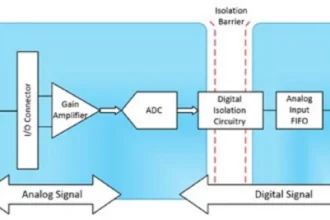Introduction to Catcher Skills
reclaim catcher is more than just a position on the field; it’s an art form that requires skill, focus, and strategy. If you’ve ever worn the gear and felt the adrenaline rush of being behind home plate, you know how vital those skills are to your game. Whether you’re returning to baseball after some time away or looking to sharpen your abilities, reclaim catcher skills can feel daunting. But fear not—this guide will walk you through essential techniques that will have you back in top shape before you know it. From throwing accuracy to footwork finesse, let’s dive into what it takes to elevate your catching prowess and make a significant impact during every inning!
Importance of Catcher Skills
reclaim catcher skills are crucial for any baseball team. They serve as the backbone of the defensive lineup, coordinating plays and guiding pitchers.
A well-trained reclaim catcher can anticipate the game’s flow. This foresight enables them to call pitches that exploit opposing hitters’ weaknesses.
Moreover, reclaim catcher act as a bridge between pitchers and fielders. Their communication fosters teamwork, ensuring everyone is on the same page during high-stakes moments.
Additionally, strong catching skills enhance a player’s confidence. When reclaim catcher know their role inside out, it positively impacts their performance behind the plate.
The ability to block balls and frame pitches effectively can change outcomes in tight games. These skills not only prevent runs but also influence umpire calls by presenting pitches in an optimal manner.
In essence, mastery of catcher techniques elevates both individual players and entire teams on the field.
Reclaiming Catcher Skills: Step by Step Guide
reclaim catcher skills requires a focused approach. Start by assessing where you stand. Identify specific areas needing improvement, such as throwing accuracy or blocking techniques.
Next, create a structured practice routine. Allocate time for each skill, ensuring consistency in training. This will help build muscle memory and improve overall performance.
Incorporate video analysis into your practice sessions. Recording yourself can provide valuable insights on posture and technique that you may overlook during live play.
Engage with coaches or experienced players for feedback. They can offer tips to refine your skills further and keep you motivated throughout the process.
Remember to stay patient with yourself as progress takes time. Celebrate small victories along the way to maintain enthusiasm in reclaim catcher those essential catcher abilities!
Technique #1: Improving Throwing Accuracy
Improving throwing accuracy is critical for any reclaim catcher looking to reclaim catcher their skills. The ability to make precise throws can change the course of a game, nabbing baserunners and keeping them at bay.
Start by focusing on your grip. Ensure you’re holding the ball properly for maximum control. A firm grip allows better handling during quick movements.
Next, work on your foot positioning. Your feet should be shoulder-width apart and slightly bent at the knees, readying yourself for an explosive throw. This stance also helps with balance as you pivot to make that throw.
Practice your mechanics regularly. Repetitive drills can help engrain proper motion into muscle memory. Throwing against a wall or using targets will hone your aim significantly.
Visualize success before each throw. Picture where you want the ball to go; this mental preparation often translates into improved performance on the field.
Technique #2: Blocking and Framing Pitches
Blocking pitches is a crucial skill for reclaim catcher. It helps prevent wild balls from reaching the backstop, saving runs and maintaining team morale. To master blocking, focus on your body positioning. Stay low, with your knees bent and glove ready.
When a pitch comes in erratically, aim to keep it in front of you. Use your body as a shield; letting the ball hit your chest protector can be effective if done properly.
Framing pitches is an art form that requires finesse. As the pitcher delivers, subtly shift your glove to present strikes more appealingly to umpires while minimizing movement.
Practice both techniques regularly during training sessions. Work alongside pitchers so you can develop chemistry and anticipate their pitching styles better.
Try visualizing game scenarios where these skills are put to the test—this mental rehearsal will sharpen your instincts when it counts most on the field.
Technique #3: Enhancing Footwork Behind the Plate
Footwork is crucial for any reclaim catcher. It can make or break your ability to respond to pitches effectively. Quick, agile movements allow you to get into position and react promptly.
Start with basic footwork drills. Practice shuffling side-to-side while maintaining a low stance. This will help you move quickly without losing balance.
Next, focus on dropping steps when receiving the ball. This technique enables you to adjust your body positioning seamlessly as the pitch approaches.
Don’t forget about lateral movement too! Being able to shift left or right enhances your overall defensive skills, especially during wild pitches or passed balls.
Incorporate agility ladder exercises into your training routine as well. These drills improve coordination and speed, two essential components of solid catching footwork.
Remember, mastering footwork takes time and dedication but pays off significantly in-game situations where every second counts.
Practice Makes Perfect: Drills for Catchers
Drills are the backbone of improving reclaim catcher skills. They help build muscle memory and boost confidence behind the plate. Start with basic throwing drills to enhance accuracy. Try short tosses before moving on to longer distances, focusing on your target.
Next, incorporate blocking drills using a tennis ball or soft baseball. This simulates wild pitches and helps you develop quick reflexes. Practice dropping to your knees while tracking the ball’s movement.
Framing exercises can elevate your game significantly. Work with a partner who will pitch from various angles. Focus on receiving the ball smoothly, making it look like strikes rather than balls.
Don’t overlook footwork drills. Set up cones and practice lateral movements quickly to get into position for every play—this agility is crucial for any successful catcher striving to reclaim catcher their skills effectively.
Mindset and Communication on the Field
A catcher’s role extends beyond physical skills. The right mindset can transform performance. It’s about confidence, resilience, and focus.
Communication is crucial on the field. As a reclaim catcher, you’re the leader in many ways. Clear signals to pitchers build trust and understanding. This synergy can make or break a game.
Encourage your teammates with positive reinforcement. A simple word of support can enhance morale and teamwork.
Stay calm under pressure; your demeanor influences the entire team’s attitude during high-stakes moments.
Visualization techniques help too—imagine successful plays before they happen. This mental practice sharpens decision-making when it counts.
Embrace feedback from coaches and peers as growth opportunities rather than criticism. A receptive mindset fosters improvement in every aspect of catching.
Remember, it’s not just about making plays; it’s also about nurturing connections that lead to success on the diamond.
Common Mistakes to Avoid
One of the most common mistakes catchers make is neglecting their stance. A poor stance can lead to missed pitches and a lack of mobility. Focus on finding a comfortable position that allows for quick movement in any direction.
Another pitfall is failing to communicate effectively with pitchers. Catchers should always be vocal, signaling their intentions clearly. Misunderstandings can result in wild pitches or strategic errors during games.
Ignoring the importance of conditioning is also detrimental. Catching requires stamina and strength, so incorporating fitness routines into training is essential for peak performance.
Additionally, some catchers overlook the value of film study. Analyzing past performances helps identify weaknesses and track progress over time.
Don’t forget about mental preparation. Stress management techniques are crucial for maintaining focus under pressure during high-stakes situations on the field.
Conclusion
reclaim catcher skills is an essential journey for any player looking to enhance their game. By focusing on key techniques such as improving throwing accuracy, mastering blocking and framing pitches, and enhancing footwork behind the plate, you can significantly elevate your performance.
Incorporating dedicated drills into your training regimen is vital; practice truly does make perfect in this position. Remember that mindset and communication with teammates are equally important aspects of being an effective catcher.
Avoiding common pitfalls will help you reclaim catcher those critical skills more efficiently. Each step taken towards refining these techniques will contribute to your growth as a player. Embrace the challenge and enjoy the process of becoming a better catcher—it’s all about determination and dedication to the craft.

















